
The drought was our worst nightmare. So were the bushfires. And smoke taint.
Covid-19 was our worst nightmare, too.
But wait, there’s more.
Beijing has slapped huge tariffs on our bottled wines.
Haven’t we suffered enough?
The preliminary tariffs range from 107.1 percent for Australia Swan Vintage (a Barossa-based company with strong Chinese links) to 169.3 percent for Treasury Wine Estates.
It was long speculated that TWE was the one Australian company firmly in China’s sights – and the fact that it has copped the biggest penalty confirms it.
Then again “All Others” on the official hit list drawn up by China – mainly small family producers – are up for 212.1 percent.
So the hard-working families will suffer more than the “big bad” corporates!
Bizarre.
So much for the China-Australia Free Trade Agreement, signed to much fanfare in December 2015.
The tariffs, understood to be provisional, will all but wipe out Australia’s $1.2 billion Chinese export market and cost thousands of jobs.
South Australia will be the biggest loser, making up more than $800 million of our total exports to China.
The Barossa and McLaren Vale are the two regions that will be hardest hit, both having invested millions of dollars in marketing and education in China in recent years.
The Riverland will also suffer because it supplies a lot of brands sold into China.
The irony is that Chinese consumers love Australian wine and can’t get enough of it.
$1.2 billion in danger
Chinese New Year celebrations – which traditionally soak up a lot of Australian wine – were cancelled last year because of the Covid-19 lockdown and Australian winemakers were looking forward to the 2021 celebrations going ahead and the resulting wine sales.
When China announced its two investigations into Australian wine, a lot of wine producers increased shipments, hoping to beat any tariffs.
A lot of Australian wine has been held up at Chinese ports in recent months. The producers will now have to decide between keeping the wine there and paying the tariff, or shipping it home.
In the 12 months to September 2020, Australian wine exports topped $2.998 billion – the highest level since 2007 when we exported $3 billion. Exports to China were up four percent to $1.2 billion.
The Australian wine industry is an innocent victim of deteoriating diplomatic relations with China, which has become increasingly hostile towards us.
China is unhappy with Australia about numerous issues including our stance on Taiwan and Hong Kong, but tensions boiled over when the Morrison Government called for an inquiry into the origins of the coronavirus.
Our relationship with China is in tatters – heartbreaking for the more than 2,000 Australian winemakers who have worked long and hard to build lasting personal relationships in China.
China (including Hong Hong and Macau) became Australia’s first billion-dollar export market in 2018.
“Most of us have put 15 or 18 years of hard work into developing that market and, jeez, part of me is thinking all that work was for nothing,” Howard Park owner Jeff Burch told The Australian.
“We are not dumping wine, that is just a red herring.
“It’s a political decision. And why is Australian wine so popular? Because people enjoy our taste and like the wines.
“They love our traceability and our honesty.
“It is not that easy to find another market that quickly that can handle this kind of volume and price points.”
There seemed to be some hope on the horizon last week when the UK and America started making diplomatic noises about China’s treatment of Australian exporters including beef, barley, lobsters, wine, timber and coal producers.
The tariffs – which follow twin investigations into Australian wine exports to China – come as $700 million in Australian coal is held up at China ports.
The Chinese Ministry of Commerce (MOFCOM) says that “preliminary findings have found Australia engaged in dumping of cheap wine”.
“China’s domestic wine industry has suffered substantial damage.”
Australia does not dump cheap wine in China. Every Australian Wine Industry Technical Conference for the past 15 years has had a common theme – how do we do better at higher price points in all of our export markets including China?
Everyone is in shock
The tariffs come on the back of a raft of challenges for Australian winemakers including drought, bushfires, smoke taint and Covid-19.
“I’m in shock like everyone else,” lawyer and wine analyst Will Taylor says.
“We all thought a nasty tariff was coming, but it’s stunning when it actually happens – especially at these levels.
“The only positive is the word temporary.”
Shares in Treasury Wine Estates, which has been selling about $500 million worth of wine in China every year, fell more than 11 percent on Friday – representing $600 million in value – before a trading halt.
TWE shares are currently trading at $8.59 following an ASX announcement on Monday that it would keep only a small presence in China and invest in other markets including other parts of Asia.
Australian Grape & Wine chief executive Tony Battaglene says, “This restriction on Australia’s exports to China will adversely impact the wine sectors of both countries.
“It will also be particularly disappointing for the millions of Chinese consumers who enjoy Australian wine, and the distributors in China who have built relationships with Australian wine businesses.
“Given the size of the tariff, Australian winemakers will now be forced to consider alternative markets for export sales.
“This decision will have a significant impact on Australia’s rural and regional economies, particularly in those states most invested in grapegrowing and winemaking, where the impact on regional employment is likely to be felt most acutely.”
He says that these are “preliminary tariffs” and both the anti-dumping and countervailing duties investigations are ongoing.
“We continue to stand firm that Australian exporters are not dumping wines in the Chinese market, nor have they received subsidies that have had a negative impact on the Chinese wine industry,” Battaglene says.
“While we are disappointed with this development, our members will continue to cooperate with MOFCOM as the investigation continues, working towards an outcome that is consistent with the facts of the case, and supports the growth of the wine industry in Australia and China.”
In recent weeks Chinese importers have been told to stop imports of Australian wine, leading to many orders being cancelled. Nothing official had been announced – until Friday.
‘We will find a way without China’
Three years ago Chinese wine company Changyu Pioneer bought 80 percent of Kilikanoon in Clare.
Kilikanoon is on the tariff ‘hit list’ – its penality is 160.6 percent.
CEO Travis Fuller says it’s “business as usual” for the company.
“We had anticipated the outcome and thus continue on our strategy of ensuring our business is well balanced across many markets,” he says.
“We are not dependant on China, yet enjoy the premium position we have in the market with a great partner.
“We will continue to work closely with them to ensure the market is strong in future.
“At a business-to-business level we have a great relationship and confidence in the future.”
Yalumba CEO Nick Waterman called the tariffs “a devastating blow” for wine producers, growers and regional communities.
“We will find a way without China, but we must act in unison and it will take time and discipline,” he says.
It’s wrong to assume these tariffs will affect only those Australian wine producers who export to China – the whole industry will suffer as cancelled export orders flood the domestic market, with the potential to drive down prices.
Winegrape prices will almost certainly suffer – especially after the news that TWE will be reduce its intake from the 2021 vintage.
Seppeltsfield Wines owner Warren Randall is the ‘Mr China’ of Australian wine, telling anyone who would listen over the past 10 years that China was the future for Australian wine. He will dodge a bullet because his focus has always been on bulk wine, which won’t attract the tariff.
However, he owns 3,318 hectares of premium vineyards, many of which supply TWE. He for one will be hoping TWE can find other markets quickly.
Many Australian wine exporters are expected to avoid the tariffs by sending wine in bulk to China.
There is a risk to our reputation in that, as one leading Australian winemaker told WBM several months ago.
“Should the Chinese market implode, those vines in fine wine regions will revert to branded commodity and push more grapes into the currently diminishing bulk wine inventory and market,” he says.
“There is much pain and suffering inherent in the reduced margins down the price scales if China imposes the tariffs.
“Another diabolical aspect of the impending Chinese decision is that only bottled wine will be affected (less than two litres) and suddenly Chinese consumers will only purchase Australian wine shipped as bulk, taking advantage of the tariff exemption and the increased supply of bulk wine.
“This will potentially destroy Australia’s fine wine image in the one market where it has avoided the stigma of being a dominantly industrial producer of branded commodity wine.”
Survival
How many challenges can one industry survive without multiple business failures?
The Australian wine industry has had everything thrown at it in recent years.
However, with more than 2,000 Australian companies exporting wine to China, this latest challenge could be our greatest.
At the start of the pandemic in April, Tony Battaglene made a dire prediction on Landline.
“We’ve got 2,600 wineries at the moment and 30 percent of that we could lose,” he said.
“That’s anything up to 700 or 800 businesses, it’s that serious. I’m very worried.”
And that was even before China blew up in our faces!
A third of Australian wine business have not closed. In fact, you would be lucky to find a handful.
JobKeeper combined with would-be international travellers spending locally, has seen solid trade at cellar doors across the nation.
As WBM noted straight after the Landline comment, Battaglene underestimated the strength and resilience of Australian winemakers.
A lot of Australian wine producers are farmers – an occupation known for toughness and resilience.
I agree with Nick Waterman that the Australian wine community will find a way to climb out of this massive hole.
And part of me still thinks China will do the right thing – eventually.
Even if it does, the days of putting all our eggs in one basket are over.
Then again, there will always be opportunists out for a quick buck in ‘hot’ markets.
On a positive note, the Australian wine industry was booming before the China miracle occurred.
When our exports hit that record $3 billion in 2007, China’s share was only $55 million.
Of that $3 billion, we sent $986 million to the UK and $917 million to America. These are the markets we need to revisit along with new opportunities.
There needs to be some industry soul-searching about chasing volume for the sake of it – especially in these unstable, worrying geopolitical times.
With regional tourism being invigorated, many wineries may find more profit – along with satisfaction and sustainability – in direct-to-consumer and cellar door sales.
Those that persist with exports will surely lean towards markets that share Australia’s core values.
Hung out to dry
China’s Foreign Ministry spokesman Zhao Lijian says, “I think the Australian side should reflect upon its own behaviour.
“They should think about whether they have respected China’s interests.
“We urge the Australian side to face up to the problems, correct their own mistakes, (and) take seriously China’s concerns instead of harming China’s interests and moving further down the wrong path.”
As former Prime Minister John Howard noted two weeks ago, Prime Minister Scott Morrison needs to meet Xi Jinping face-to-face.
In a way, the implosion of our friendship with China is a case study in communiation failure.
The Morrison Government held crisis talks a fortnight ago and its advice to Australian winemakers was to “find new markets”.
Gee thanks!
Easier said than done during a global pandemic with the virus still running rampant in many countries – and no international travel.
Not to mention many struggling economies around the world.
We must persist with China. We’ve invested too much – billions of dollars, probably – to simply walk away.
One fact should keep us all interested in China – its economy is expected to double by 2035.
We need a piece of that.
Australian winemakers have been hung out to dry.
If you’re going to infuriate Australia’s biggest trading partner – a nation of 1.4 billion people – why would you do it during a one-in-one-hundred-year global pandemic when there are question marks over the Australian and global economies?
It’s a question that will haunt Australian winemakers for a long time.
Some Australian winemakers are more forgiving. Tahbilk Wines stands to lose a lot in China, but chief executive Alister Purbrick told The Australian that he supports the Federal Government’s stance and that “Australia’s sovereignty was worth much more than a few shipments of our finest red wine”.
I don’t think anyone wants Australia to stop airing grievances on global affairs, but there’s a time and place.
One of the Federal Government’s priorities during this global crisis should have been to keep all international trading avenues open.
We completely stuffed it up.
The most hurtful part of this whole debacle?
When Australia took the high moral ground to smack down China over the virus – at a time when the virus was not even close to peaking and Australia had escaped relatively unscathed – the guy doing the most chest-beating was Federal Trade Minister Simon Birmingham, a former executive of the Winemakers’ Federation of Australia.
With friends like that, who needs enemies?
The tariff hit list
Treasury Wine Estates – 169.3 percent
Casella Wines – 160.2 percent
Australia Swan Vintage – 107.1 percent
Australia Farm And Land Investment – 160.6 percent
Accolade Wines – 160.6 percent
Octtava Wines Pty Ltd – 160.6 percent
Australian Vintage Limited – 160.6 percent
Pernod Ricard Winemakers Pty Ltd – 160.6 percent
Bogdan Investments Pty Ltd – 160.6 percent
Brown Brothers Milawa Vineyard – 160.6 percent
Agreen Pty Ltd – 160.6 percent
Dorrien Estate Winery – 160.6 percent
Ferngrove Vineyards – 160.6 percent
Fowles Wine – 160.6 percent
Furunde Wine Co. – 160.6 percent
Kilikanoon Wines – 160.6 percent
The Red Kangaroo Wine Company – 160.6 percent
Chapel Hill Winery Pty Ltd – 160.6 percent
Portia Valley Wines Pty Ltd – 160.6 percent
Zilzie Wines Pty Ltd – 160.6 percent
S. Smith & Son – 160.6 percent
Terra Felix – 160.6 percent
Australian Food & Beverage Group – 160.6 percent
Wingara Wine Group – 160.6 percent
All Others – 212.1 percent
Know anything? Let us know. Email info@madiganmedia.com.au.
• China wine tariffs a kick in the guts for regional Australia.





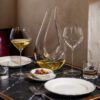
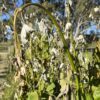



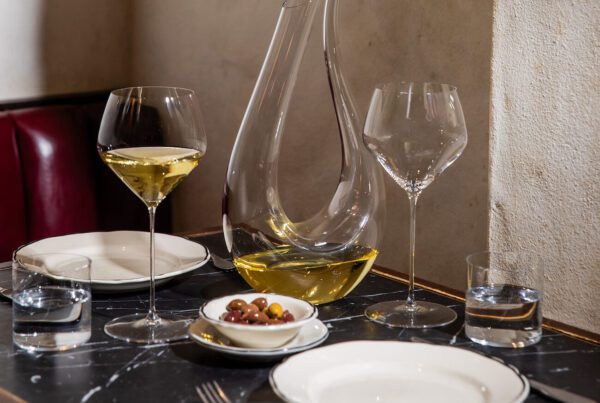
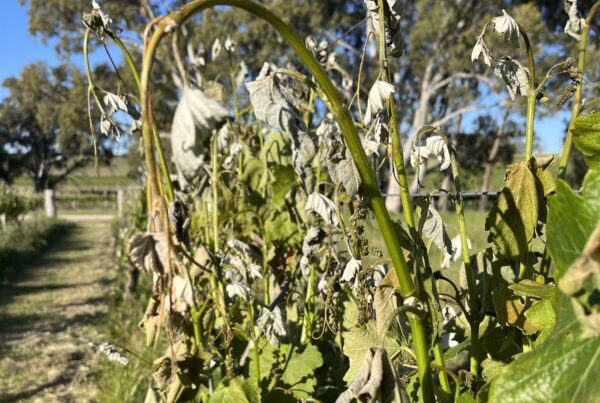
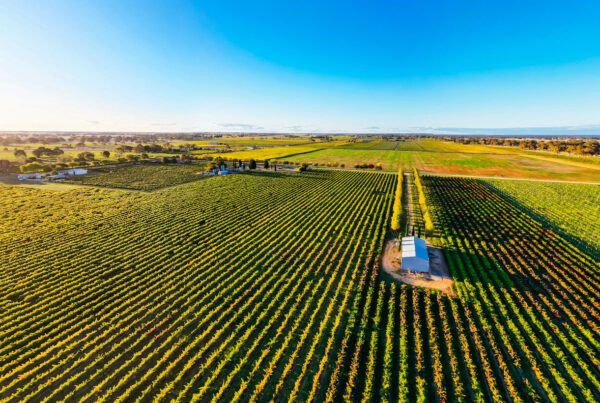
What do you expect to happen when you piss off your biggest customer?
Australia started taking the moral high ground and attacked China on Covid, Huawei, FPDA, Quad, HK, South China Sea… after Scott Morrison came to power.
Morrison tried to ingratiate himself with Donald Trump, and became Trump’s attack dog on China, departing from decades of careful Australian statesmanship.
China hates Morrison, and has retaliated with harsh measures.
The irony is that the largest beneficiary is the US, which has replaced Australian wine, beef, barley, seafood… with American products.
China’s retaliation is only beginning, and I cannot imagine what happens when they ban outbound tourism and decide not to recognise Australian degrees and diplomas when the pandemic finally gets under control.
The Australian tourism industry would miss out on China’s huge pentup demand for foreign travel, Australian universities and colleges would cut staff and programs, while Australian undergrads will pay higher fees without full fee paying Chinese students.
Some say Australia will find new markets for its products, and it will, but they will be nowhere as lucrative as China.
For decades, Australia and China had an amicable relationship. Why not return to that?
While Ken Lek is correct in his description of “the China Problem”, it is both simpler snd more complex than he presents.
The issue is not on China or the Chinese but the CCCP and their worldview.
The CCCP believes that only their absolute control can restore China to a pre-1840s level of relative prosperity (a share of world GDP at least twice what it is now) and influence.
They view the period since 1840 as a period of humiliatingly racist and capitalist imperialism that only a centrally controlled, revolutionary Marxist government can reverse.
The implicit deal achieved with the CCCP in the 1970’s was that rapprochement with western countries would provide China with strategic “room” to grow by neutralising the Russian threat and assistance to modernise provided that they liberalise as they got wealthier. In many ways, we delivered on our end of the bargain.
Understanding this, there was always going to be a point where a liberal democracy would have problems with the CCCP’s record on human rights, South China Sea island building, the “independence” of Hong Kong, Taiwan, etc. as they reassert themselves at increasingly historical levels of influence and power. This has been evident for at least 15 years.
The current Australian Government’s incompetence in addressing Covid’s origins with China only accelerated this inevitable clash because a) we’re small enough to use as a pawn in China’s bigger game with the USA and the EU and b) we can’t live without our mining and education exports to them. Mr Lek wishes for a return to a situation the CCCP wishes to move away from because of what they believe about us. While we may wish away our White Australia past, it is well within living memory for them. These are problems that can’t be wished away.
That our premium wine sales are now suffering in all major markets (it’s not just a China problem folks) is part a much bigger problem for Brand Australia, the nation.
Brand Australia is seen by educated consumers in wealthy export markets (our customers) as an increasingly clumsy and uncaring brand that loves digging up and burning coal, doesn’t cooperate internationally on climate change, an unreliable ally, has burning rainforests(!), a dying Barrier Reef, rides roughshod over indigenous and immigrant cultures, has massive natural fish kills and sells wine for less than the price of bottled water while our rivers dry up, etc.
This is what is reported internationally about us, not our wine show or Brownlow Medal winners.
These are real perception issues that a confusing, watered down sustainability system of contested provenance for the wine industry will do nothing to overcome.
Twenty years ago, Australia and New Zealand were both viewed as “cool” and aspirational places to buy from and destinations to visit.
Increasingly, we are seen as “dumb New Zealand” and certainly not as a “better” version than any of our main wine competitors.
For instance, how many western billionaires are buying up and building doomsday compounds in NZ compared to Oz? NZ has an actual problem with this phenomena.
This macro Brand Australia image problem can only be offset by far more clever strategy for the wine sector than anything currently on offer from any of our current peak bodies or leading companies.
That the current Government that has caused or accelerated all of these problems seems to have largely “captured” our industry bodies (read their bios carefully) while the Federal Opposition doesn’t seem to know we’re alive is a problem no one talks about. These are our real problems. Doc Martin and our wine trade with China are just sad symptoms.
Please don’t “at” me for being a messenger of unwelcome news.
These problems hurt us all financially, from the farm gate to customers’ lips.